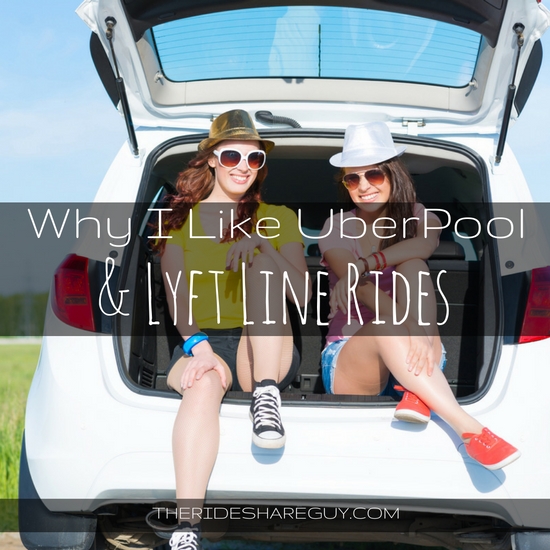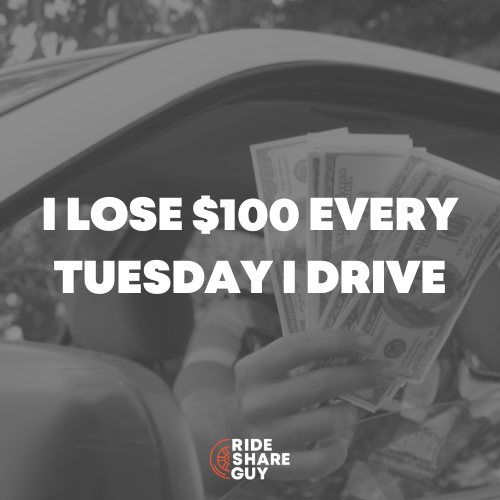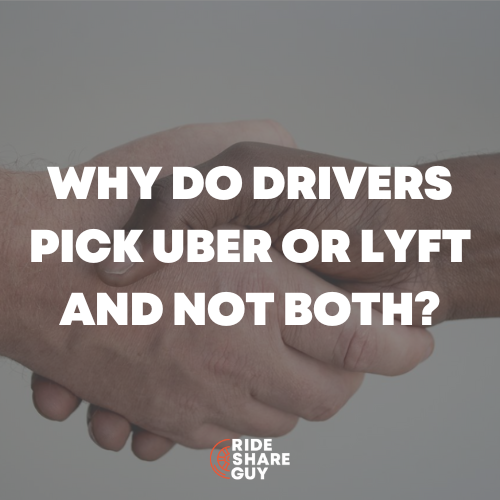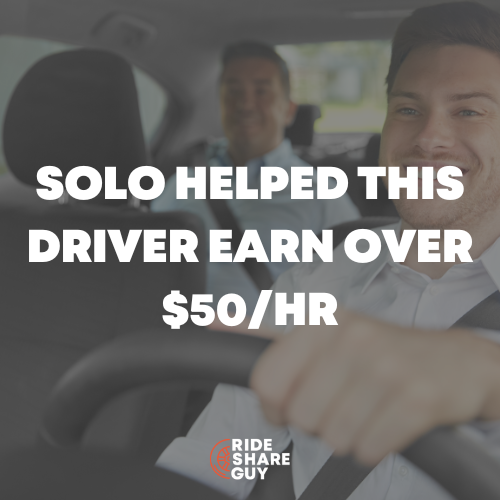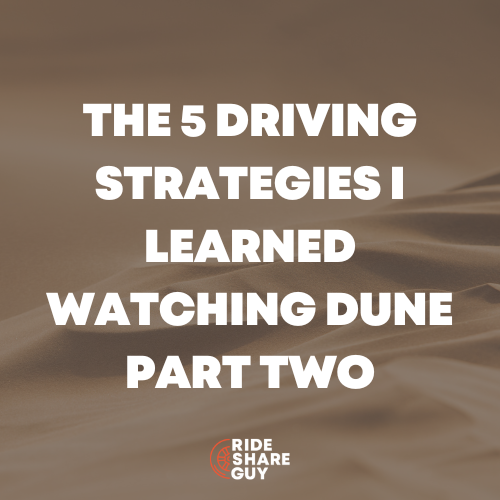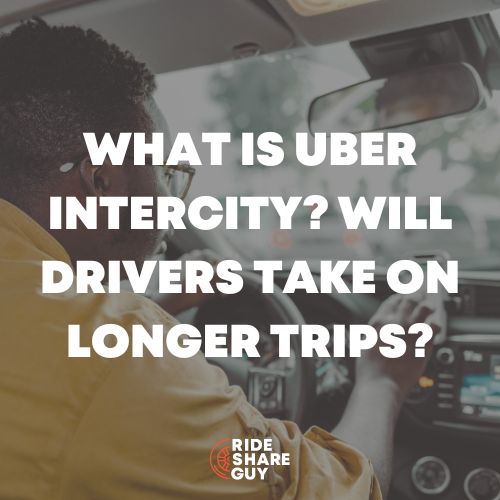Harry here. Today we’re sharing a guest post from RSG reader Will Preston, an IT analyst and rideshare driver based out of San Diego. I often joke that in two years of UberPool, I have yet to find a single driver who enjoys doing these rides. Will saw these comments though and was quick to raise his hand and volunteer to share a guest post on why he actually enjoys Pool rides.
So enjoy this guest post from Will curand let us know in the comments if you agree with him or not.
A lot of drivers have expressed their concerns with Uber Pool & Lyft Line (which I’ll collectively call pool rides) but I, for one, am a fan of these rides. This was my opinion prior to the detailed ride analysis I will discuss below, and it remains my opinion after the research.
Like other drivers, I think the pay could be better, but I do not believe in the apparently common practice of ignoring pool matches, or turning down pool rides altogether. I believe the dislike for pool rides comes from a misunderstanding of how we actually get paid and a failure to take into account the basic concepts of supply and demand.
How You Are Paid for Pool Rides
Before I explain the research I did, I think it’s important to explain how we are paid for pool rides. We are paid both a per mile and per minute rate, similar to a regular UberX/Lyft ride. In my market of San Diego, Uber pays $1/mile and $.15/min for Uber Pool vs $1.10/mile and $.20/min for UberX. Lyft pays $1.12/mile and $.15/min for regular Lyft rides and $1/mile and $.13/min for Lyft Line rides in San Diego.
This rate applies to the entire pool ride, from the first pickup to the last drop off. This includes any miles and minutes that you went out of your way in order to pick up and drop off additional passengers. Let me say that again. You get paid for additional miles and minutes you drive to pick up additional passengers. This puts to bed the argument that additional pickups are extra work for no additional pay. Not only are you paid for the extra miles you drive them, you’re paid for the miles you spent to get to them — which you normally would not be paid for.
Consider the drawing in Figure 1. It’s a logical representation of an UberPool ride consisting of two pickups (A & B) and two dropoffs (C & D). If these had been two separate rides, the driver who picked up A would get paid for the distance shown in red and purple — basically a straight line from A to D.
The driver who picked up B would get paid for the straight distance from B to C. But since one driver picked up both, the driver will also be paid for the distance show in green, which is the distance the driver went out of their way to pick up B and the distance the driver went out of their way to get back to the original route after dropping off B.
 This is not meant to show a route per se, just that there are miles on both ends of picking up and dropping off B that the driver would not get paid for if this was a regular ride. But since this is a pool ride, the driver is paid for all miles shown in this diagram, include the red, blue, purple, and green miles — as well as any additional minutes spent waiting at B for the passenger, or additional minutes spent dropping the second passenger at C.
This is not meant to show a route per se, just that there are miles on both ends of picking up and dropping off B that the driver would not get paid for if this was a regular ride. But since this is a pool ride, the driver is paid for all miles shown in this diagram, include the red, blue, purple, and green miles — as well as any additional minutes spent waiting at B for the passenger, or additional minutes spent dropping the second passenger at C.
Please also note that while pax may get up to 40% discounts, those discounts are not being passed on to the driver. So if they’re paying $.70/mile (or a flat $5 for all Pool rides), you’re still getting a $1/mile and $.15/min (or whatever the rate is where you live) — EVEN IF you don’t get a match.
Pool Rides are Not Unsafe
Some drivers have implied that pool rides were less safe because you get a ping in the middle of the ride. I think that’s nonsense. If you do anything other than acknowledge the route change and then adjust as necessary, that’s on you. Do you also complain when you get a ride request while you’re driving? Perhaps Uber/Lyft should only do that while you’re parked. You know, for your own safety.
Passengers Like Pool Rides – If They’re Explained Properly
My passengers love pool rides. Maybe it’s because of how I present them. Before I start a pool ride, I notify the first passenger that gets in the car that it is a pool ride and I explain what that means. That means it’s a little less expensive, but it may take a little longer to get to their destination and they may be riding with other people.
If they’re surprised or express dissatisfaction with that, then I tell them to cancel the request and re-request it as an UberX ride while in the car. I explain that if they do that, they’re likely to get a cancellation fee, but they should be able to get it refunded if they ask. I haven’t had anyone cancel at this point.
One thing I hear drivers complaining about is riders getting bent out of shape if they have to squeeze in a fourth passenger. This doesn’t very often, and I handle it when it happens.
Most of the time I get no matches. But when I do, usually no one has to move (fill in the empty front/back seat). A really small percentage of the time, two people in the back seat are forced to move over for a third person. It’s the most uncomfortable of the scenarios, but it happens very infrequently.
When this happens I go above and beyond to make light of it and try to get the groups talking. I’ve found when I do this, the people cool with this enjoy meeting others and they’re BFFs by the time we get there. In fact, before I started pre-emptively explaining pool, I had a couple where she got bent out of shape once we got two more pax. She was sulking for a few minutes until I started making fun of the situation, and talking about how they couldn’t have gotten a tinier third person next to them. (The third girl was about 5′ and 90 lbs wet.) Again, they were BFFs by the time they got there.
Another fun story I like to tell is when I picked up a GORGEOUS young lady who was sitting in the back. The UberPool match added two nerds, one of whom sat next to her and the other in the front seat. These two would have never met IRL. They became BFFs because they were both playing PokemonGo in my car. I would slow down when they saw a Pokemon so they could grab it into the car. Each was giving the other tips on usage. When the two nerds got out, I saw them talking to each other about how he had talked to a pretty girl. The girl and I had a giggle and then I dropped her off.
In addition to my intro banter, at some point I tell them that I advise all my pax that they should take pool rides whenever they are available, as long as time is not a factor. I explain how if they are in any sort of time-based situation, either leave much earlier or take UberX.
There is the worry of an overly drunk person as an additional passenger sitting next to a non-drunk person or even a drunk person. It’s never happened — and I drive the drunk crowd til 2 AM. If it were to happen, I would cancel the ride for the second person. I’ll verify their identity and sobriety before getting in the back with another passenger, especially if either of them is a female. And if my first passenger is very drunk, I would not pick up additional pax.
Pool Rides Increase Demand
I’ve seen drivers slam pool rides because they turn one ride for two drivers into one ride for one driver, thus decreasing the supply of rides. I think this fails to take supply and demand into account.
I’ve personally seen that pool rides tend to make long rides more palatable to people. It makes Uber/Lyft close enough to the cost of public transit options that they choose Uber/Lyft over the train, etc. And any time that happens that increases ridership.
A perfect example is the other night when the ballgame was over. I had four pax that took my car for a $15 UberPool ride home instead of doing the park-and-ride at a trolley station. Uber was definitely more expensive, but it was close enough that I could hear them rationalizing the decision. The same ride would have been $25 each way w/UberX, making the trolley much more interesting.
A Financial Analysis of UberPool Rides
I took a really close look at all UberPool rides I’ve had in the last month that included more than one passenger. (I am a part time driver so there were only 12 rides.) I recorded the stop and start destinations, as well as the total miles and time for each ride. I then plugged each into a spreadsheet to see how much I was actually paid — if any — for the extra effort of making a second pickup and dropoff.
Consider again the drawing below. When you’re done with an UberPool ride, it shows only the first pickup and last dropoff address (A and D). It does not show the addresses at B and C. But as you will see, they were not needed for my calculations. The miles traveled would be the same whether I dropped off the first passenger at C or D, but the math is way easier if I assume that the second passenger is dropped first, so I did just that.
This means that each trip consists of the optimum route from A to D (a straight line in the drawing) plus the miles traveled to get from that route to/from B and to/from C. Uber gives me the total miles and time traveled for the entire route, so I have to extrapolate the rest.
The first thing I did was get the optimum route from A to D. To do this, I fed addresses A & D into Google Maps to see how many miles and minutes Google Maps thought it should take. I then subtract the optimum miles and minutes from the total miles and minutes of the entire trip. The result is the additional miles and minutes I spent picking up and dropping off the additional passenger.
To determine how much I got paid for my extra effort, I first calculate what I would have gotten paid for the first ride if I used the optimum route and was paid regular UberX rates ($1.10/mile & $.20/min vs $1/mile & $.15/min in my market). I then subtracted that from what I got paid for the entire ride. The difference of the two is what I was paid for my extra efforts. (For simplicity reasons, I excluded from the calculations any surge fees I received).
An Actual Example
Consider the trip shown in the screenshot. You can see that my starting point was 35XX Wawona Dr and my final dropoff was 97XX Marilla Dr. I drove a total of 28 miles and 47 minutes, and for this I was paid $25.60.
If I plug those two addresses into Google Maps, I get a different route than the one shown in the Uber ride screenshot above. The best route between those two addresses is 23.7 miles and should take 27 minutes.

If I subtract 23.7 miles (the optimal route) from 28 miles (the route Uber had me take due to two pickups and dropoffs) and 27 minutes (the optimum time) from 47 minutes (my actual time). That tells me I went 4.3 miles and 20 minutes out of my way for the second passenger.
I next calculate the fare I would have been paid for “Trip 1” based on UberX rates ($1.1/mile and $.20/min in my market) and Google Maps’ directions, which would have been paid $23.60 for 23.7 miles and 27 minutes.
But remember, I was actually paid $25.60 for the Pool ride so I did get paid $2 more for the additional 4.3 miles. That isn’t a ton of money but it’s definitely more. This trip was actually one of the smallest differences too. For most other rides, I made significantly more with Pool.
| 35XX Wawona Dr, San Diego, CA | UberX Rates | ||||
| 97XX Marilla Dr, Lakeside, CA | Per Mile | Per Minute | |||
| miles | minutes | $1.10 | $0.20 | Payout | |
| Total Trip | 28 | 47 | $25.60 | ||
| Trip 1 (Optimal Route) | 23.7 | 27 | $26.07 | $5.40 | $23.60 |
| Trip 2 (Extra $$) | 4.3 | 20 | $2.00 | ||
Calculating 12 rides this way, I went 127 “base” miles and 194 “base” minutes, for which I would have been paid $134 if I was being paid regular UberX rates. (Base miles and minutes are the miles and minutes doing the first pickup and dropoff.) But I also drove 76 extra miles and 255 extra minutes for the second pickup and dropoff, for which I was was paid an additional $64 after commission. I believe this definitely puts to rest the idea that pool rides make us do more work for less pay.
I think my analysis shows that pool rides are far from a ripoff. It’s just another way to make more money. Maybe it’s not incrementally as good as the “base” miles if you had been paid UberX rates, but it still doesn’t match the mantra of “more work for less money”.
Readers, what do you think of this analysis and does it change your mind about Pool rides?
Bio: Will Preston is an IT analyst that specializes in backup and recovery technology and drives for Uber and Lyft in his spare time. You can read more of his work on his blog here.
